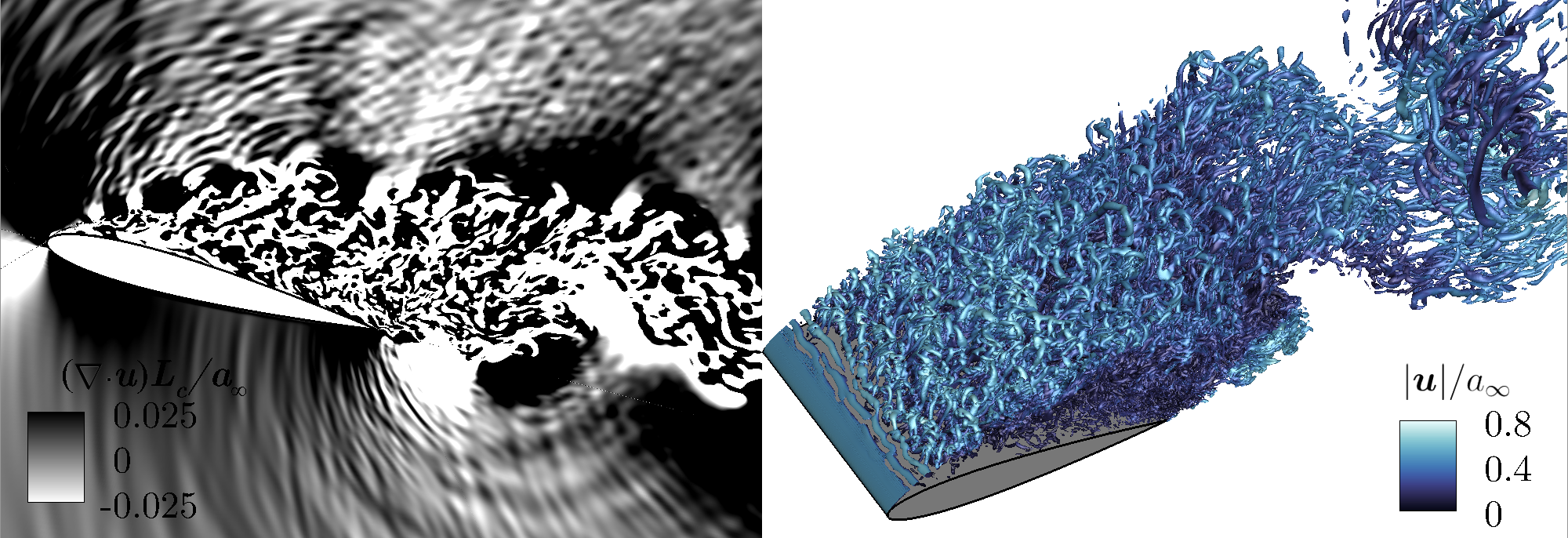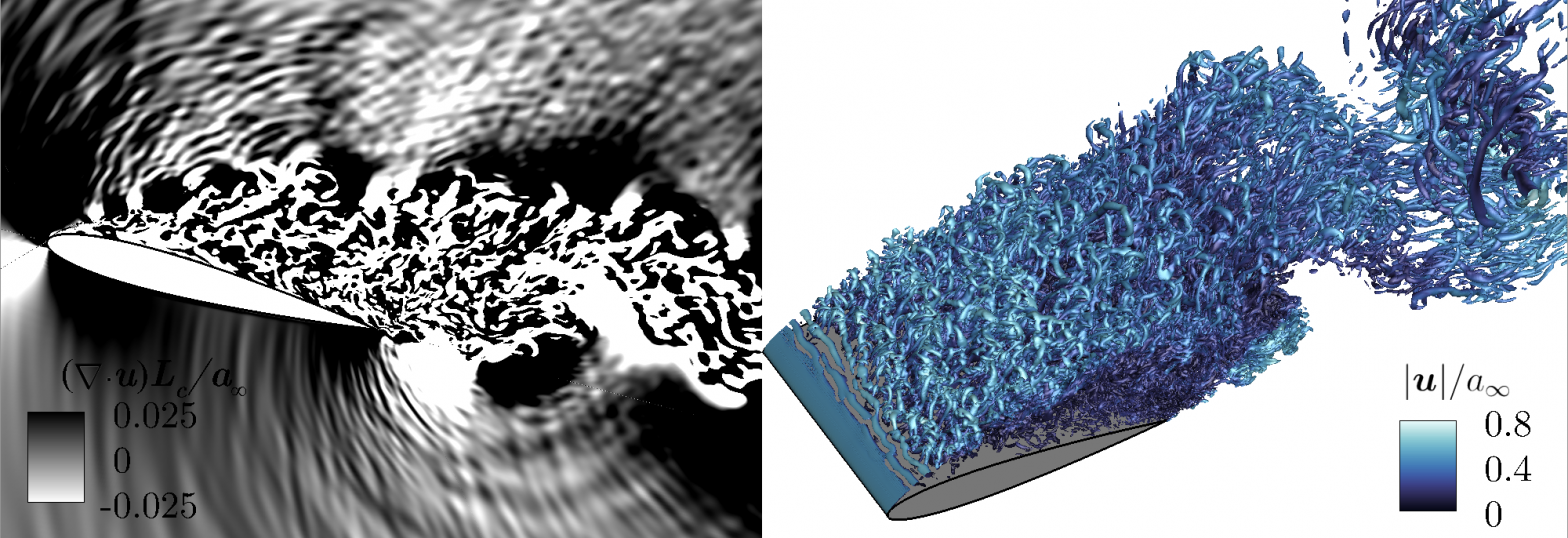International Journal of Heat and Fluid Flow
Turner J.M. & Kim J.-W.
Aircraft wings and wind-turbine blades generate aerodynamic noise and such noise becomes louder when they are operating at an off-design condition (i.e. a high incidence angle against the oncoming flow). This is due to the wing/blade section undergoes flow separation and stall which results in a substantially intensified turbulence, hence strong fluctuations in pressure on the surface of the wing/blade. Despite the fact that it is a significant problem for aircraft in take-off/landing and wind turbines in a gusty condition, the level of understanding on the stall noise mechanisms is currently low. In this paper, a detailed computational simulation is carried out in order to identify and explain some of the fundamental mechanisms of stall noise generation by using a NACA0012 aerofoil at a Reynolds number of 50,000 and a Mach number of 0.4. A highly accurate supercomputer code, CANARD (Compressible Aerodynamics & Aeroacoustics Research coDe) developed at the University of Southampton has been used for this study. Several key findings made in this paper include the radiated noise directivity, wall pressure characteristics and key flow features for noise generation, all differing considerably from those in pre-stall conditions. This paper is one of the invited articles for TSFP (Turbulence and Shear Flow Phenomena) Special Issue in the International Journal of Heat and Fluid Flow.

